lexus LFA 2012 Owner's Manual / LEXUS 2012 LFA OWNERS MANUAL (OM77006U)
Manufacturer: LEXUS, Model Year: 2012, Model line: LFA, Model: Lexus LFA 2012Pages: 420, PDF Size: 5.02 MB
Page 301 of 420
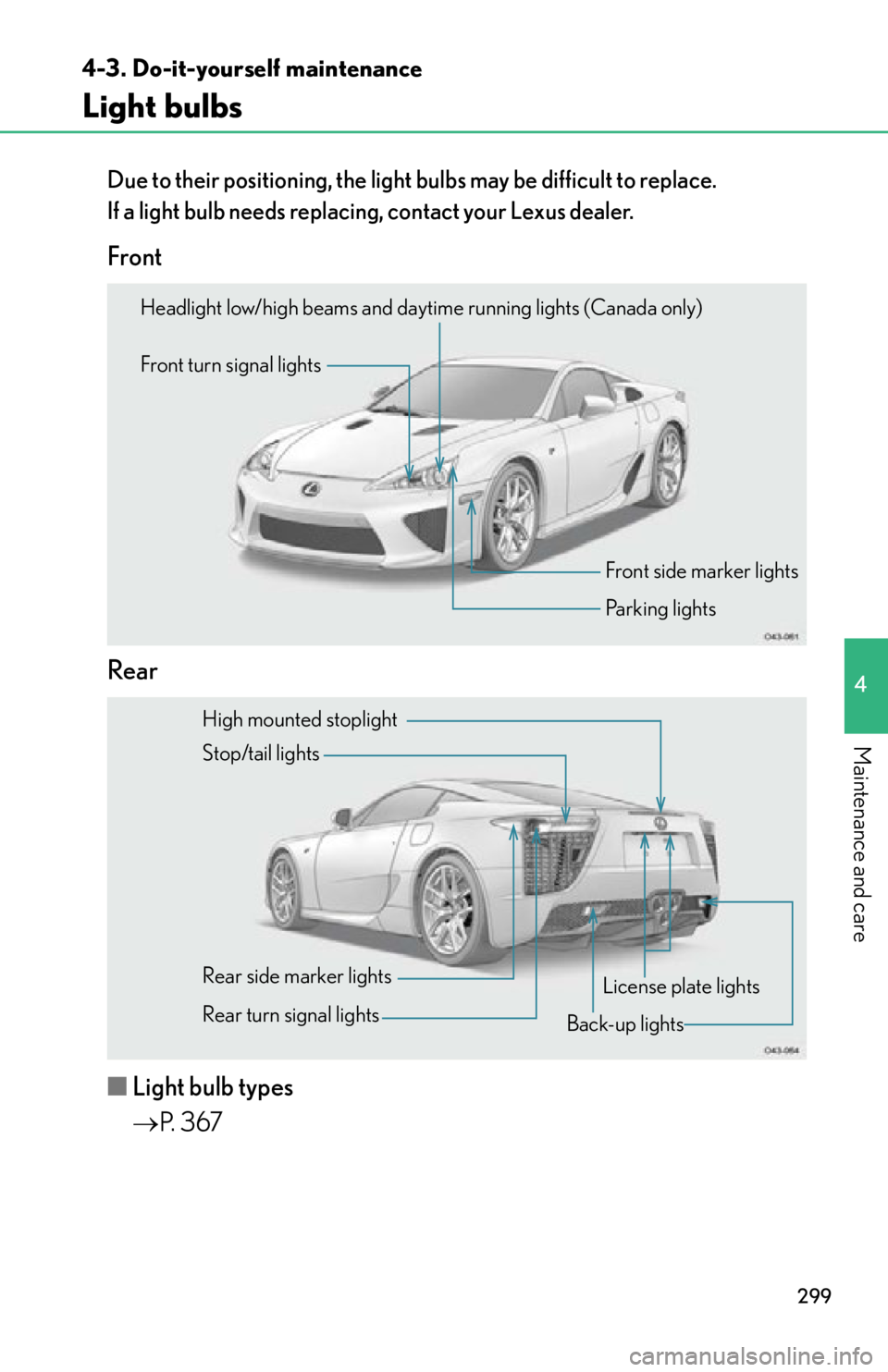
299
4-3. Do-it-yourself maintenance
4
Maintenance and care
Light bulbs
Due to their positioning, the light bulbs may be difficult to replace.
If a light bulb needs replacin g, contact your Lexus dealer.
Front
Rear
■Light bulb types
P. 367
Front side marker lights
Parking lights
Headlight low/high beams and dayt
ime running lights (Canada only)
Front turn signal lights
High mounted stoplight
Rear turn signal lights Back-up lightsLicense plate lights
Stop/tail lights
Rear side marker lights
Page 302 of 420
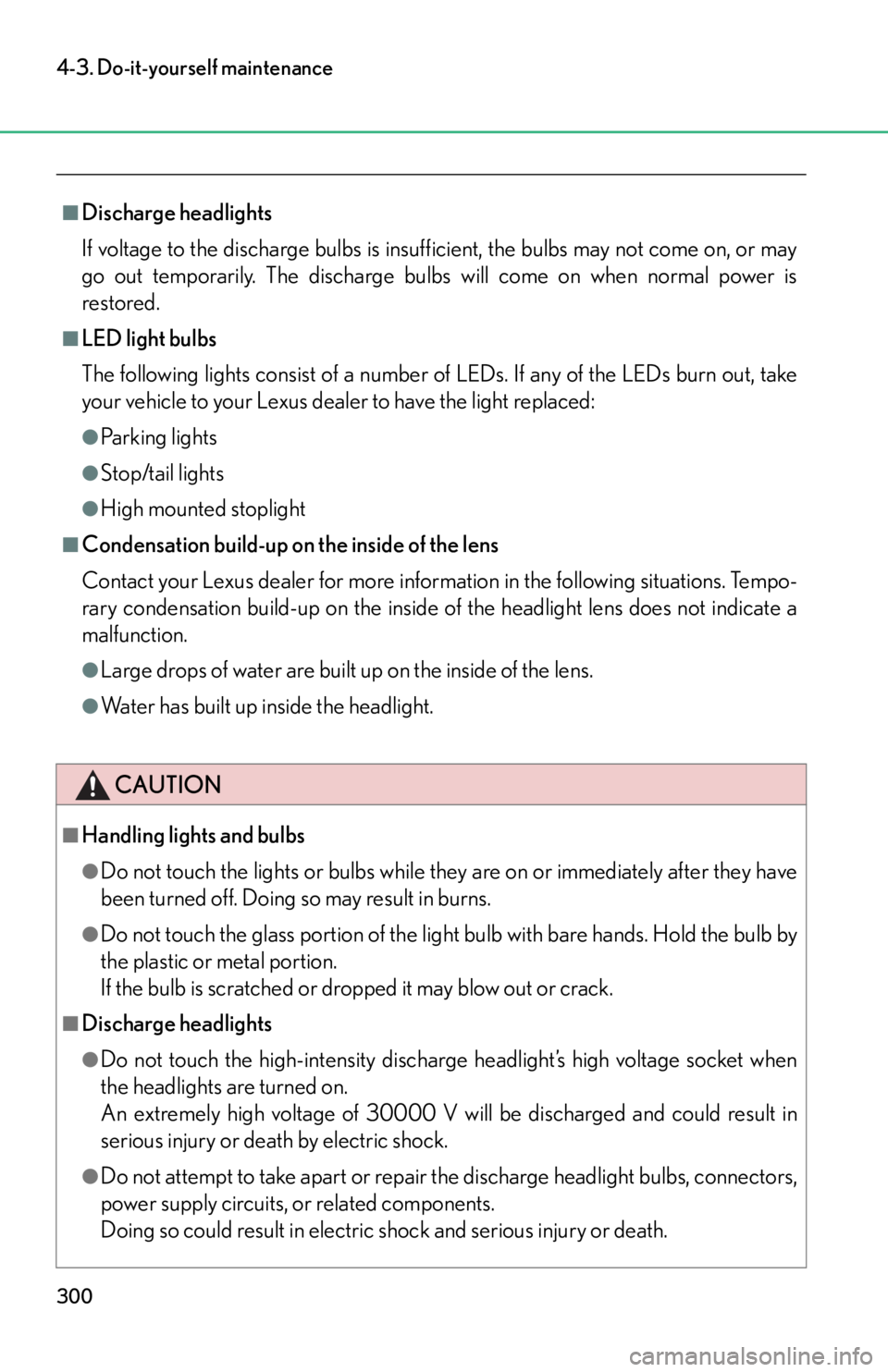
300
4-3. Do-it-yourself maintenance
■Discharge headlights
If voltage to the discharge bulbs is insufficient, the bulbs may not come on, or may
go out temporarily. The discharge bulbs will come on when normal power is
restored.
■LED light bulbs
The following lights consist of a number of LEDs. If any of the LEDs burn out, take
your vehicle to your Lexus dealer to have the light replaced:
●Parking lights
●Stop/tail lights
●High mounted stoplight
■Condensation build-up on the inside of the lens
Contact your Lexus dealer for more information in the following situations. Tempo-
rary condensation build-up on the inside of the headlight lens does not indicate a
malfunction.
●Large drops of water are built up on the inside of the lens.
●Water has built up inside the headlight.
CAUTION
■Handling lights and bulbs
●Do not touch the lights or bulbs while they are on or immediately after they have
been turned off. Doing so may result in burns.
●Do not touch the glass portion of the light bulb with bare hands. Hold the bulb by
the plastic or metal portion.
If the bulb is scratched or dropped it may blow out or crack.
■Discharge headlights
●Do not touch the high-intensity discharge headlight’s high voltage socket when
the headlights are turned on.
An extremely high voltage of 30000 V wi ll be discharged and could result in
serious injury or death by electric shock.
●Do not attempt to take apart or repair the discharge headlight bulbs, connectors,
power supply circuits, or related components.
Doing so could result in electric shock and serious injury or death.
Page 303 of 420

When trouble arises5
301
5-1. Essential informationEmergency flashers.............. 302
If your vehicle needs to be towed................................ 303
If you think something is wrong ..................................... 308
Fuel pump shut off system .................................... 309
Event data recorder ............... 310 5-2. Steps to take in an
emergency
If a warning light turns on or a warning buzzer
sounds... .................................. 312
If a warning message is displayed................................ 322
If you have a flat tire............... 332
If the engine will not start .... 343
If you lose your keys/ wireless remote
control transmitter ............. 344
If the parking brake cannot be released ............. 345
If the vehicle battery is discharged ............................ 348
If your vehicle overheats ...... 351
If the vehicle becomes stuck........................................ 354
If your vehicle has to be stopped in an
emergency ............................ 355
Page 304 of 420
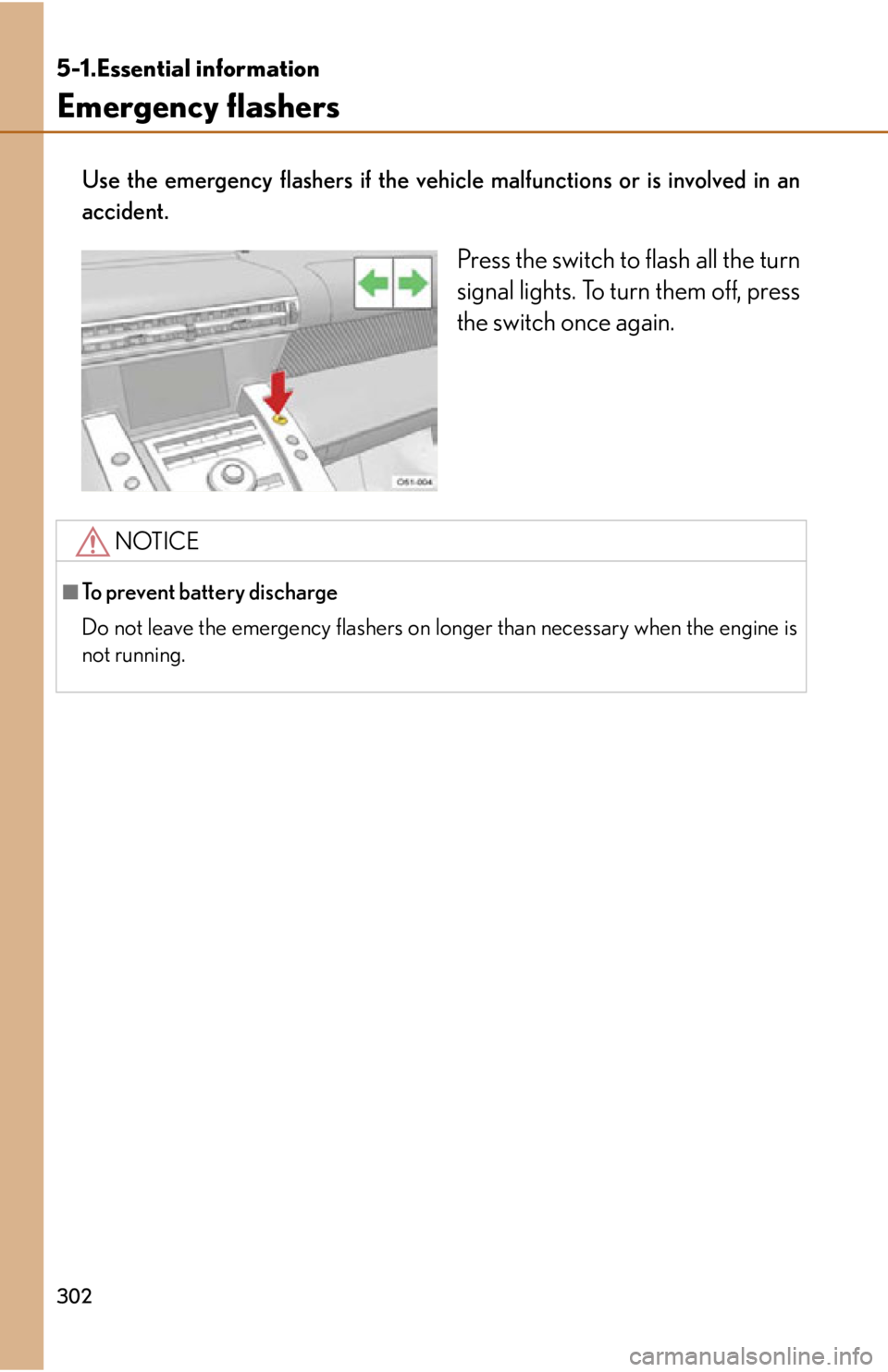
302
5-1.Essential information
Emergency flashers
Use the emergency flashers if the vehicle malfunctions or is involved in an
accident.
Press the switch to flash all the turn
signal lights. To turn them off, press
the switch once again.
NOTICE
■To prevent battery discharge
Do not leave the emergency flashers on longer than necessary when the engine is
not running.
Page 305 of 420
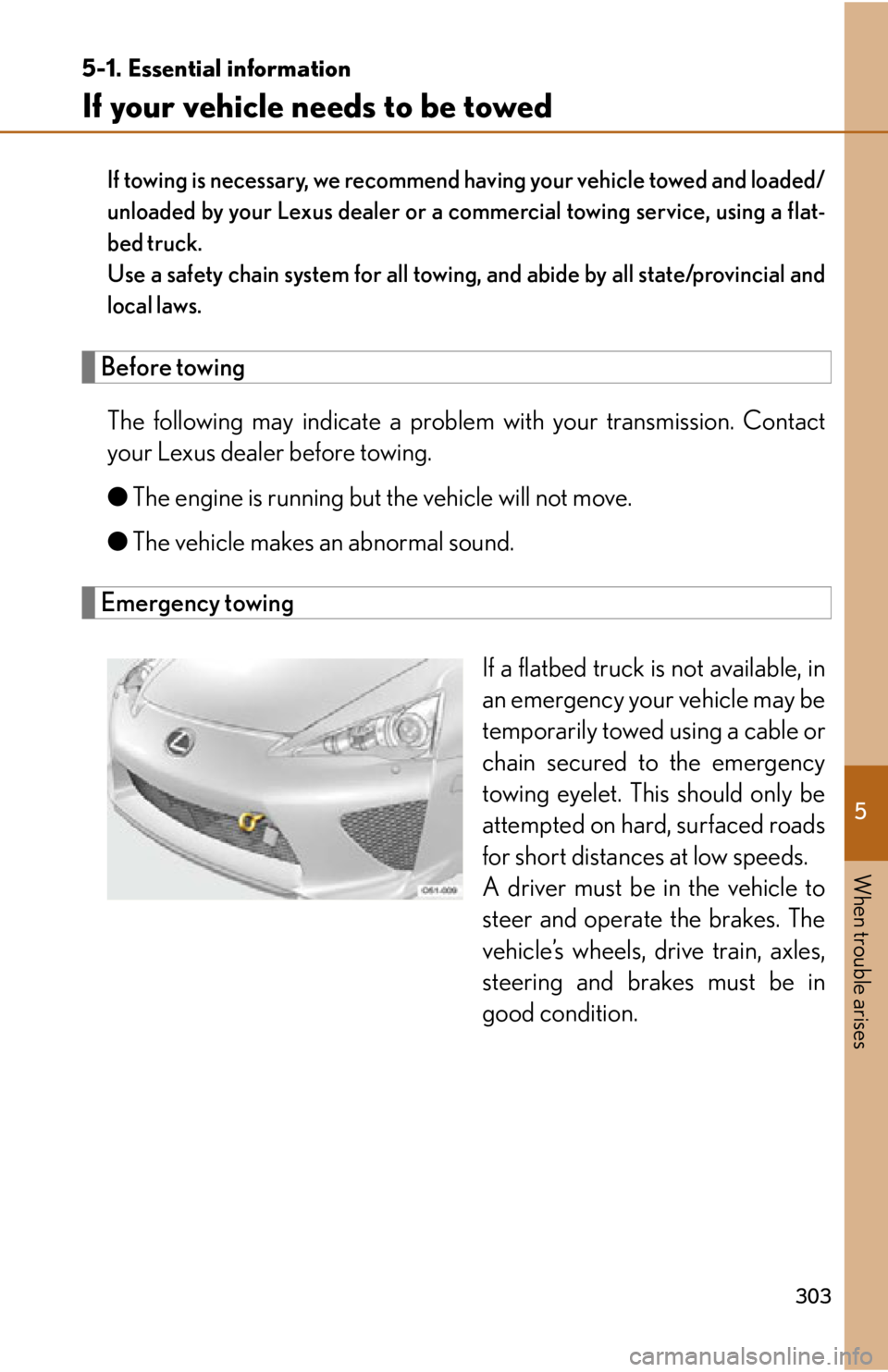
5
When trouble arises
303
5-1. Essential information
If your vehicle needs to be towed
If towing is necessary, we recommend having your vehicle towed and loaded/
unloaded by your Lexus dealer or a commercial towing service, using a flat-
bed truck.
Use a safety chain system for all towing, and abide by all state/provincial and
local laws.
Before towing
The following may indicate a problem with your transmission. Contact
your Lexus dealer before towing.
● The engine is running but the vehicle will not move.
● The vehicle makes an abnormal sound.
Emergency towing
If a flatbed truck is not available, in
an emergency your vehicle may be
temporarily towed using a cable or
chain secured to the emergency
towing eyelet. This should only be
attempted on hard, surfaced roads
for short distances at low speeds.
A driver must be in the vehicle to
steer and operate the brakes. The
vehicle’s wheels, drive train, axles,
steering and brakes must be in
good condition.
Page 306 of 420
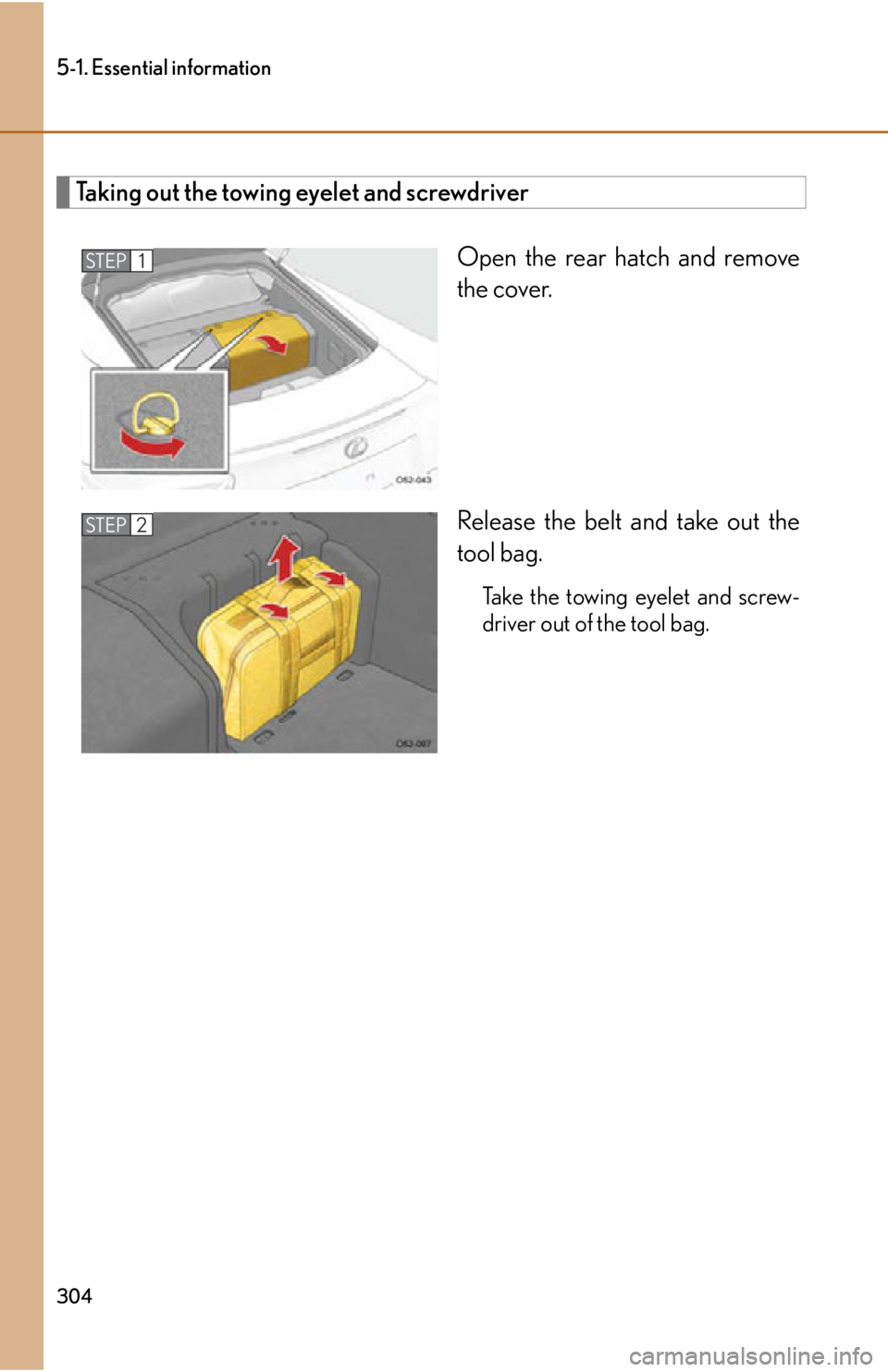
304
5-1. Essential information
Taking out the towing eyelet and screwdriverOpen the rear hatch and remove
the cover.
Release the belt and take out the
tool bag.
Take the towing eyelet and screw-
driver out of the tool bag.
STEP1
STEP2
Page 307 of 420
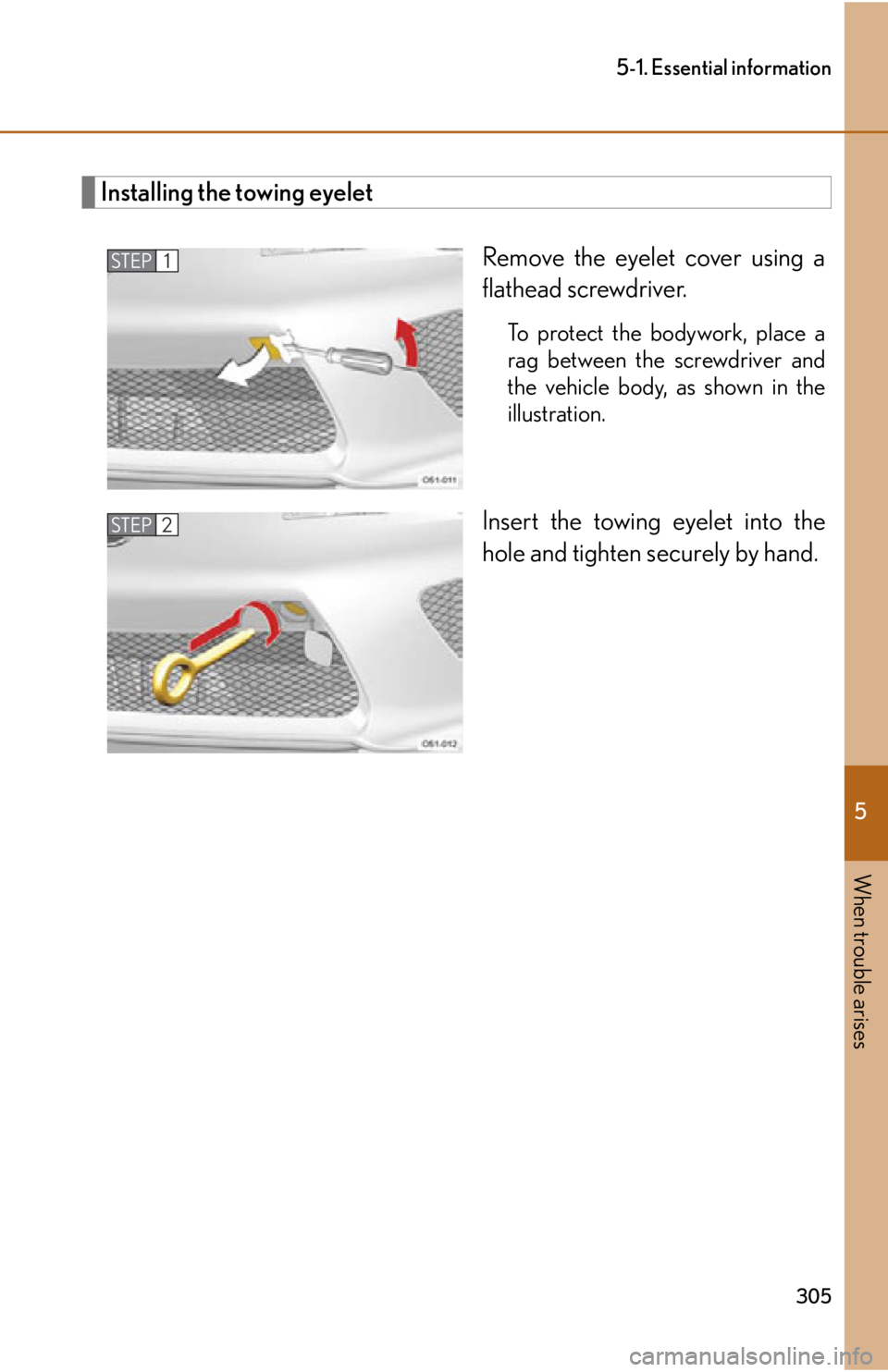
5
When trouble arises
305
5-1. Essential information
Installing the towing eyeletRemove the eyelet cover using a
flathead screwdriver.
To protect the bodywork, place a
rag between the screwdriver and
the vehicle body, as shown in the
illustration.
Insert the towing eyelet into the
hole and tighten securely by hand.
STEP1
STEP2
Page 308 of 420
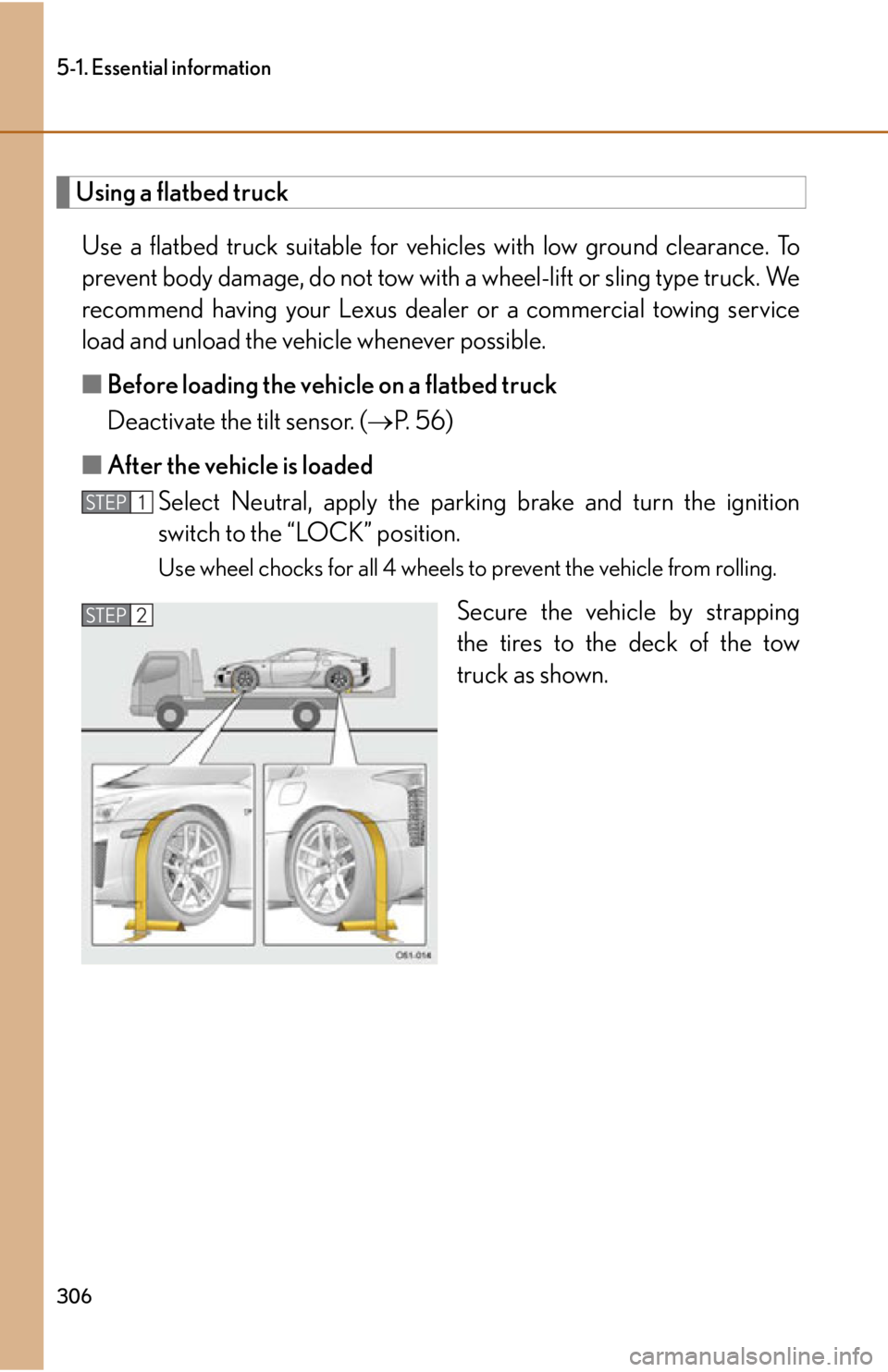
306
5-1. Essential information
Using a flatbed truckUse a flatbed truck suitable for vehicles with low ground clearance. To
prevent body damage, do not tow with a wheel-lift or sling type truck. We
recommend having your Lexus dealer or a commercial towing service
load and unload the vehicle whenever possible.
■ Before loading the vehicle on a flatbed truck
Deactivate the tilt sensor. ( P. 56)
■ After the vehicle is loaded
Select Neutral, apply the parking brake and turn the ignition
switch to the “LOCK” position.
Use wheel chocks for all 4 wheels to prevent the vehicle from rolling.
Secure the vehicle by strapping
the tires to the deck of the tow
truck as shown.
STEP1
STEP2
Page 309 of 420
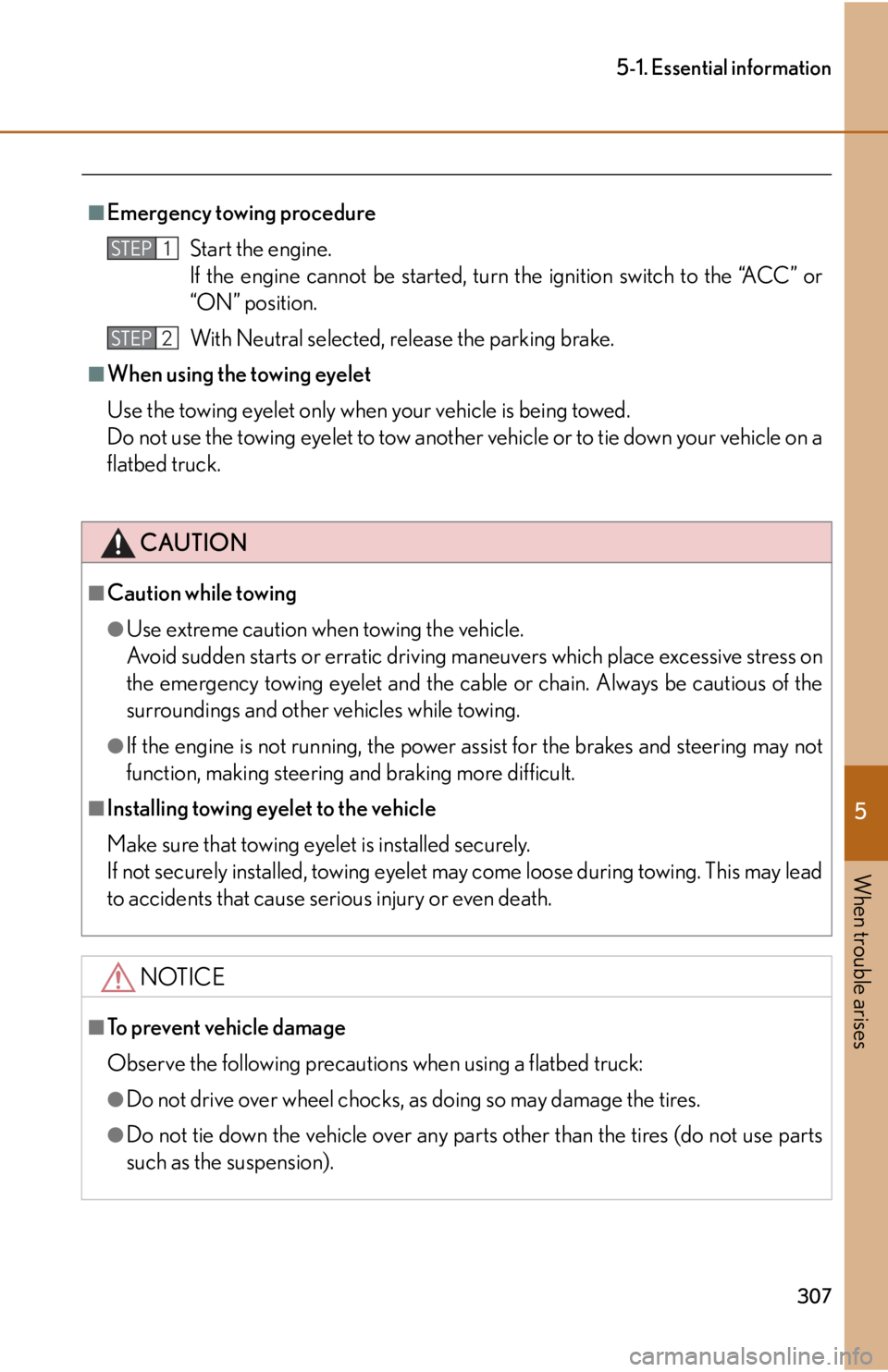
5
When trouble arises
307
5-1. Essential information
■Emergency towing procedureStart the engine.
If the engine cannot be started, turn the ignition switch to the “ACC” or
“ON” position.
With Neutral selected, release the parking brake.
■When using the towing eyelet
Use the towing eyelet only when your vehicle is being towed.
Do not use the towing eyelet to tow another vehicle or to tie down your vehicle on a
flatbed truck.
CAUTION
■Caution while towing
●Use extreme caution when towing the vehicle.
Avoid sudden starts or erratic driving maneuvers which place excessive stress on
the emergency towing eyelet and the cable or chain. Always be cautious of the
surroundings and other vehicles while towing.
●If the engine is not running , the power assist for the brakes and steering may not
function, making steering and braking more difficult.
■Installing towing eyelet to the vehicle
Make sure that towing eyelet is installed securely.
If not securely installed, towing eyelet may come loose during towing. This may lead
to accidents that cause serious injury or even death.
NOTICE
■To prevent vehicle damage
Observe the following precautions when using a flatbed truck:
●Do not drive over wheel chocks, as doing so may damage the tires.
●Do not tie down the vehicle over any part s other than the tires (do not use parts
such as the suspension).
STEP1
STEP2
Page 310 of 420

308
5-1. Essential information
If you think something is wrong
If you notice any of the following symptoms, your vehicle probably needs
adjustment or repair. Contact your Lexus dealer as soon as possible.
■Visible symptoms
●Fluid leaks under the vehicle
(Water dripping from the air conditioning after use is normal.)
● Flat-looking tires or uneven tire wear
● Engine coolant temperature gauge ind icates that the temperature is
higher than normal.
■ Audible symptoms
●Changes in exhaust sound
● Excessive tire squeal when cornering
● Strange noises related to the suspension system
● Pinging or other noises related to the engine
■ Operational symptoms
●Engine missing, stumbling or running roughly
● Appreciable loss of power
● Vehicle pulls heavily to one side when braking
● Vehicle pulls heavily to one side when driving on a level road
● Loss of brake effectiveness, spon gy feeling, pedal almost touches
the floor